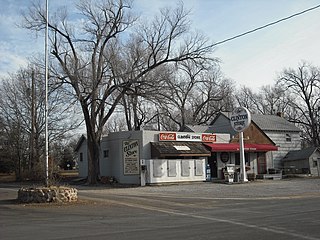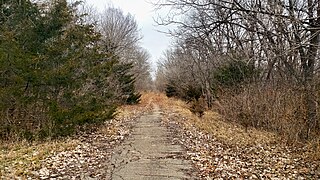
Bloomington is a city in Hennepin County, Minnesota, United States, on the north bank of the Minnesota River, above its confluence with the Mississippi River, 10 miles (16 km) south of downtown Minneapolis. At the 2020 census, the city's population was 89,987, making it Minnesota's fourth-largest city.

John Alexander Logan was an American soldier and politician. He served in the Mexican–American War and was a general in the Union Army in the American Civil War. He served the state of Illinois as a state Representative, a U.S. Representative, and a U.S. Senator and was an unsuccessful candidate for Vice President of the United States as James G. Blaine's running mate in the election of 1884. As the 3rd Commander-in-Chief of the Grand Army of the Republic, he is regarded as the most important figure in the movement to recognize Memorial Day as an official holiday.

Petersfield is a market town and civil parish in the East Hampshire district of Hampshire, England. It is 15 miles (24 km) north of Portsmouth. The town has its own railway station on the Portsmouth Direct line, the mainline rail link connecting Portsmouth and London. Situated below the northern slopes of the South Downs, Petersfield lies wholly within the South Downs National Park.
Education in Kansas is governed at the primary and secondary school level by the Kansas State Board of Education. The state's public colleges and universities are supervised by the Kansas Board of Regents.

Angel Mounds State Historic Site, an expression of the Mississippian culture, is an archaeological site managed by the Indiana State Museum and Historic Sites that includes more than 600 acres of land about 8 miles (13 km) southeast of present-day Evansville, in Vanderburgh and Warrick counties in Indiana. The large residential and agricultural community was constructed and inhabited from AD 1100 to AD 1450, and served as the political, cultural, and economic center of the Angel chiefdom. It extended within 120 miles (190 km) of the Ohio River valley to the Green River in present-day Kentucky. The town had as many as 1,000 inhabitants inside the walls at its peak, and included a complex of thirteen earthen mounds, hundreds of home sites, a palisade (stockade), and other structures.

Albert Gallatin Brown was Governor of Mississippi from 1844 to 1848 and a Democratic United States Senator from Mississippi from 1854 to 1861, when he withdrew during secession.

Thomas Hamilton was a Scottish architect, based in Edinburgh where he designed many of that city's prominent buildings. Born in Glasgow, his works include: the Burns Monument in Alloway; the Royal High School on the south side of Calton Hill ; the Royal College of Physicians of Edinburgh; the George IV Bridge, which spans the Cowgate; the Dean Orphan Hospital, now the Dean Gallery; the New North Road Free Church, now the Bedlam Theatre; Cumstoun, a private house in Dumfries and Galloway; and the Scottish Political Martyrs' Monument in Old Calton Cemetery, Edinburgh.

Wickliffe Mounds is a prehistoric, Mississippian culture archaeological site located in Ballard County, Kentucky, just outside the town of Wickliffe, about 3 miles (4.8 km) from the confluence of the Ohio and Mississippi rivers. Archaeological investigations have linked the site with others along the Ohio River in Illinois and Kentucky as part of the Angel phase of Mississippian culture. Wickliffe Mounds is controlled by the State Parks Service, which operates a museum at the site for interpretation of the ancient community. Listed on the National Register of Historic Places, it is also a Kentucky Archeological Landmark and State Historic Site.

Louis Powell Harvey was an American politician and the seventh Governor of Wisconsin. He was the first Wisconsin Governor to die in office.

Stull is an unincorporated community in Douglas County, Kansas, United States. Founded in 1857, the settlement was initially known as Deer Creek until it was renamed after its only postmaster, Sylvester Stull. As of 2018, only a handful of structures remain in the area.

Clinton is an unincorporated community on a peninsula next to Clinton Lake in Douglas County, Kansas, United States.
Arapahoe was one of the first settlements in what is now the U.S. state of Colorado. Nothing remains of the now deserted ghost town in Jefferson County, except a historical marker on the south side of 44th Avenue, between the towns of Golden and Wheat Ridge.

Richland is currently a ghost town in southeastern Shawnee County, Kansas, United States.

Prairie City is a ghost town in southeast Douglas County, Kansas, United States, near present-day Baldwin City.

Padonia Township is a township in Brown County, Kansas, United States. As of the 2000 census, its population was 259.
Alexander Handyside Ritchie was a Scottish sculptor born in Musselburgh in 1804, the son of James Ritchie, a local brickmaker and ornamental plasterer, and his wife Euphemia. The father in turn was the son of a fisherman and amateur sculptor.

Ora Rush Weed was a Methodist minister who founded Weedville, a small farming community in Arizona. Weedville's utilities are provided by the City of Peoria. The area is unincorporated which means that the land is not governed by Peoria, the local municipal corporation, instead it is administered by the county.
Ruawaro is a rural community in the Waikato District and Waikato region of New Zealand's North Island, situated south of Lake Whangape and west of Huntly.

















